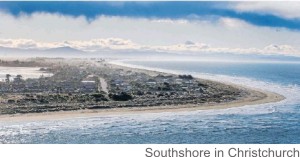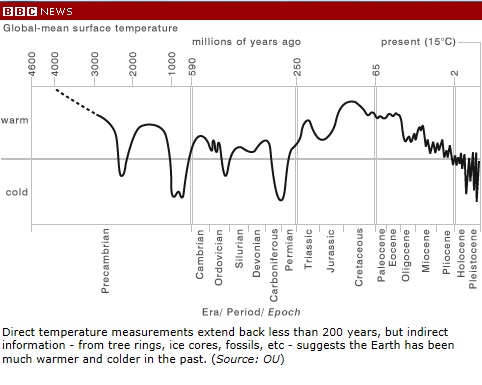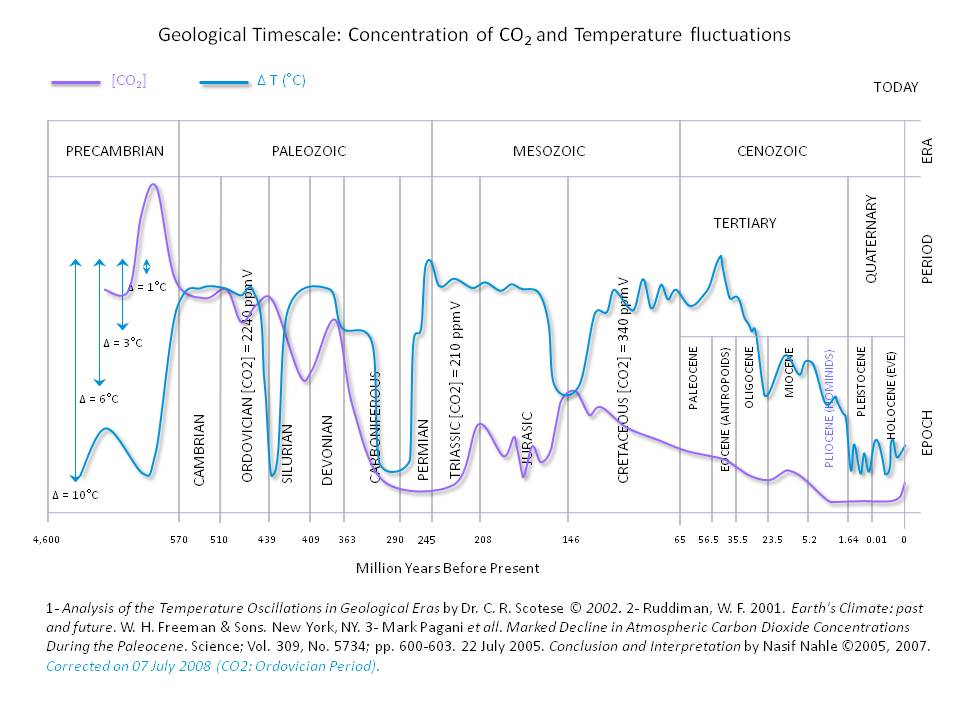NZCPR | 10 Sept 2015
By Dr Muriel Newman
 Should fact be the only issue that drives public policy?
Should fact be the only issue that drives public policy?
That is a question that is no doubt being asked by the 24,000 coastal residents in Christchurch whose properties have been designated by their Council as being at risk of sea level inundation because of global warming. The warnings, based on a 100 year forecast, have been placed on their Land Information Memorandum (LIM) reports, not only restricting their rights to develop their properties, but carrying implications for insurance cover and costs, as well as property values.
This extremist approach is being promoted by the Ministry for the Environment, which recommends that councils should plan for a future sea level rise of at least 0.8 metre by 2090, based on the alarmist projections of the melting of the Antarctica and Greenland ice sheets, by the United Nations Intergovernmental Panel on Climate Change. This has led the Christchurch Council to adopt as its guidelines a worst case scenario, to produce a sea level rise of 0.4 metre by 2065 and a one metre rise by 2115. In adopting the UN’s radical projections, the Council has ignored local evidence of coastal accretion.
According to Professor Chris de Frietas of Auckland University, the same thing happened in New South Wales in Australia, where the the government ordered local councils “to consider evidence for sea level rise on a beach-by-beach basis. The move is reaction to punitive planning conditions set by local authorities based on sea level rise predictions contained in reports by the UN Panel on Climate Change. It is also a reaction to observations that showed local shoreline sedimentation rates in many places were making beaches bigger.”
Local councils are required by central government to address coastal hazards in their long-term plans. The New Zealand Coastal Policy Statement requires councils to “Identify areas in the coastal environment that are potentially affected by coastal hazards, giving priority to areas at high risk of being affected.” The fact that these hazard risks are to be assessed over an excessively long 100-year period and are to include ‘sea level rise’ and ‘climate change’, indicates that the measures are primarily designed to ensure councils are protected from future accusations of negligence.
It is the responsibility of each individual council to decide on what guidelines to use regarding coastal hazards. While common sense suggests they should be basing them on the historical record of local coastal change over the last 50 to 100 years, they appears instead to prefer the alarmist recommendations of the Ministry for the Environment, based on melting ice sheets.
The Christchurch community is now organising itself to fight against the Council’s changes, and so they should. In 2013, when the Kapiti Coast District Council took a similar approach, ignoring local data showing a long-accreting shoreline, to follow the advice of the Ministry for the Environment and global warmers at the UN, property owners fought back. The Council was challenged in the High Court. Justice Joe Williams described the 50-year and 100-year hazard lines as starkly simplistic, and said they had the potential to seriously affect the value and marketability of coastal properties: “there must be millions of dollars at stake… it would be a callous council indeed that was unmindful of that potential impact”. The Council removed the information from LIM reports.
The responsibility for these debacles could be said to lie with the Ministry for the Environment. In spite of the fact that there has been no discernable escalation in global temperatures or sea levels for over 18 years, the Ministry is still promoting the UN’s alarmist predictions.
Isn’t it time the government stepped in and directed the Ministry for the Environment to change their coastal hazard guidance to councils to recommend they consider local evidence of sea level change on a beach-by-beach basis?
The point is that even if government bureaucrats are sympathetic to the UN’s climate change cause, it is simply not acceptable that they are allowing their ideology to override the facts. That is not to say that international forecasting should not be used – if it is found to be accurate, of course it should. But until it is shown to be accurate, it should be ignored.
This was an issue that New Zealander Dr Michael Kelly, the Prince Phillip Professor of Technology at Cambridge University in the UK and a Fellow of the Royal Society, touched on in a recent article in a British newspaper, when he wrote, “Carbon dioxide levels in the atmosphere have continued to rise, but since 1998 there has been no statistically significant rise in global temperatures at all. This flies in the face of the confident predictions made by nearly all the climate computer models that the temperature would continue to rise as it did from 1975 to 1998.”
While all of the UN’s global warming predictions, including sea level rise, are based on computer models, modelling the climate is notoriously difficult. The climate is an extraordinarily complex system that averages weather over time and space. To date, we still cannot predict weather with much accuracy beyond about five days. Mathematically speaking, it is a chaotic system, and very small differences, such as rounding errors, can produce such widely divergent outcomes that long-term predictions are virtually impossible.
On top of that, a large number of factors influence weather and the climate, including the sun, oceans, mountains, the poles, wind, rain, clouds, humidity, atmospheric pressure, even the earth’s magnetic fields, gravity and orbit. Natural events also have a huge impact – lightening that strikes the earth dozens of times every second, giant cyclones that occur every four days or so, major earthquakes every ten days, volcanic eruptions every couple of weeks, and tsunamis every couple of months.
the fact is that global temperatures have been constantly changing since the earth was formed some 4.6 billion years ago. There have been periods when the planet has been completely ice free, with oceans covering around a third of the present land area. But then the earth would start to cool, snow would fall on the mountains and reflect the sun’s heat, the poles would begin to freeze over, glacial ice would start covering the land, the sea level would fall, and an ice age would begin.
Within an ice age there are cycles of warmer weather called interglacial periods, when the earth’s temperature increases but permanent snow and ice remain. These interglacial periods are followed by colder glacial periods where the temperature cools and glacial ice sheets advance.
The earth is presently in an interglacial period within an ice age. These interglacial periods usually last for around 10,000 years, followed by glacial periods of around 100,000 years. With the present interglacial period having already lasted for some 10,500 years, history would suggest we are overdue for a new glacial period.
The following chart shows how temperatures have changed since the earth’s formation:
And this chart shows how carbon dioxide levels have changed compared to temperature:
Carbon dioxide has been described as the lifeblood of our planet because of photosynthesis – the process by which green plants use the sun’s energy to convert CO2 and water into the food we eat and the oxygen we breathe. To claim that CO2, which has been present in our atmosphere at levels more than ten times what they are today – long before mankind had evolved and during periods where the earth’s temperature has been very hot and freezing cold – has suddenly started destroying the planet, just doesn’t make sense.
The reality is that unfortunately, carbon dioxide is being used as a political football. When radicals embraced the environmental movement in the seventies, driving out people like Dr Patrick Moore the founder of Greenpeace, they used the climate debate to conceal their real agenda – the global redistribution of wealth.
But their end game is now starting to emerge as leaders of developing countries form themselves into a global alliance, claiming that any adverse weather event has been caused by man-made global warming and that the ‘rich’ nations – including New Zealand – that they say are responsible for the problem, should be forced to pay them compensation.
The issue that started life as ‘global warming’, then changed into ‘climate change’, once world temperatures stopped rising, is now being transformed into ‘climate justice’.
As India’s Prime Minister Narendra Modi said last week, “In my view, the most adversely affected by climate change are the poor and the downtrodden. When a natural disaster strikes, they are hit the hardest. When there are floods, they are rendered homeless. During a quake, their homes are destroyed. During droughts, they are affected and during extreme cold too, the homeless suffer the most. We can’t let climate change keep affecting people in this manner. Which is why I believe the discourse must shift focus from climate change to climate justice.”
This is one of the main items on the agenda at the forthcoming climate talks in Paris in December, when all nations are expected to sign up to binding targets for carbon dioxide emissions and climate compensation.
In this debate, the USA has always been a beacon of common sense. While they have domestic laws to reduce pollution and promote safe environmental practice, they had stood aside from the economically destructive climate change goals of the United Nations. However, now that President Obama is nearing the end of his presidency, he appears to have become a global warming ambassador and is busy preaching climate Armageddon claiming that last year was the hottest on record.
I asked this week’s NZCPR Guest Commentator, Cambridge University’s Professor Michael Kelly, if he could reconcile these two viewpoints for us – how can he be right, in claiming that there has been no global warming since 1998, while President Obama can stand on the world stage and claim that 2014 was the hottest year on record? Professor Kelly explains:
“President Obama said that 2014 was the warmest on record. That is disputed in many quarters. It was as warm as many other recent years, but not significantly more so. When you can only measure the temperature to an accuracy of 0.1C, you are not allowed to use a difference of 0.02C from several averages to quote a positive increase – it is well within the error margin.
“It is 25 years now since climate model predictions have been made, and the vast majority have been overestimates, some gross overestimates, of temperature change. Every freak weather event is now, quite erroneously, attributed to man-made climate change. I retain faith in the self-correcting nature of science, and if the temperature does not rise for another five years, climate scientists will be back to the drawing board, as the probability of such a temperature stasis over 25 years in the models is vanishingly small. Watch this space.”
Professor Kelly finishes his article by asking whether we should “take future climate change seriously, just in case, and pay an insurance premium?” In response he says that we should not consider unaffordable ‘premiums’, but should be taking ‘prudent’ measures to protect ourselves against any future changes in the climate.
And that is why it is so absurd that the Christchurch City Council has based their coastal hazard guidelines on wildly inaccurate models over an unacceptably long timeframe, to declare that 28,000 homes could be at risk of the ice sheets melting in 100 years time.
The Christchurch Council – and all other councils around New Zealand for that matter – should base their coastal hazard projections, on what has happened in the past. There is no perfect predictor of the future, but looking at what has actually happened in the past is better than seizing on unreliable models developed by those driving a political agenda.
The Challenge of Climate Prediction
By Professor Michael Kelly FRS FREng
You may have heard in recent weeks that 2015 is shaping up to be the warmest ever based on the hottest recorded July. In fact we have the same positive El Nino weather pattern in the Eastern Pacific that we had in 1988, the hottest whole year on record to date. This in spite of the record cold winter in some parts of the northern hemisphere, and the winter in New Zealand has not been as mild as in recent years. If 2015 does turn out to be the hottest, it will only be by one-to-three tenths of one degree Celsius or less, a small fraction of the actual error associated with estimating the globally averaged temperature which is greater than half of one degree.
Those concerned with rising temperature will be quick to quote President Obama saying that the last 15 years are the hottest on record. But I assert that the global temperature has not changed significantly in 15 years. How can we both be right? This is a point I have had to explain more than once, and a simple analogy will suffice.
Imagine you setting out to walk from the southern edge of Lake Taupo to the Chateau using the state highway. At first you climb, up to the level of the Desert Road. As you proceed you are then on the flat so you are not climbing. You can still say that you are on the highest point of your trip, but it is approximately the same for several miles. That’s why President Obama and I are correct so far. The crunch comes in the future, as to whether you turn off and go on up to the Chateau, or you find your way to a local river and go down to the level of Lake Taupo. The recent behaviour of the weather of itself does not tell us what will happen next. We rely on our understanding of the weather and our ability to forecast ahead. This is where President Obama and I part company in terms of the certainty about what happens next.
The atmosphere is a complex, tightly coupled, highly non-linear multi-component system which is rapidly changing and it is also chaotic. Predicting its future properties in 35 years is like trying to predict the shape of a particular rain cloud in 35 minutes as it scuds over the sky on a windy day. No one can have any great confidence in specific predictions. In 2004 the Met Office in the UK was >90% confident that the temperature in the UK would rise by 0.3C by 2014: i.e. nearly half of the total rise of 0.8C in the 20th century*. In the end there was no rise at all over that period. The confidence in the quantitative predictions of the models misplaced then, as it still is now.
President Obama said that 2014 was the warmest on record. That is disputed in many quarters. It was as warm as many other recent years, but not significantly more so. When you can only measure the temperature to an accuracy of 0.1C, you are not allowed to use a difference of 0.02C from several averages to quote a positive increase – it is well within the error margin.
These are very important points. It is 25 years now since climate model predictions have been made, and the vast majority have been overestimates, some gross overestimates, of temperature change. Every freak weather event is now, quite erroneously, attributed to man-made climate change. I retain faith in the self-correcting nature of science, and if the temperature does not rise for another five years, climate scientists will be back to the drawing board, as the probability of such a temperature stasis over 25 years in the models is vanishingly small. Watch this space.
Where I still have some hope, but am less confident, is that the present madness of politicians subverting the world economy by putting a severe cap on the carbon emissions that brought the western countries to their present level of prosperity, but denying it to the Chinese, India and African people who aspire to the same prosperity, and the only way they will achieve it is with more fossil fuel use in the next 20 years.
Why might we return to the level of Lake Taupo, as opposed to climb to the Chateau? As I wrote in the Times (of London) on 14 October 2010: “One possible scenario for 2050, no less possible than any projected on the basis of climate models, is that we are in the middle of a deep solar minimum, and it is only the CO2 pumped into the atmosphere over the previous 100 years that is staving off cold climates that would lead to crop failure and mass starvation. The uncertainty is not only in the science and in the scenarios, but in what is a reasonable response today.” Nearly five years later the sunspot cycle is very weak. In the last solar minimum we had the little ice age, and many of the one billion people died. This time we will have nearly nine billion humans to feed.
But shouldn’t we take future climate change seriously, just in case, and pay an insurance premium? The short answer is that we should not pay a premium that would bankrupt the world economy: any more than we take prudent measures about earthquakes, so we should take only prudent measures to protect against future climate. The real problem is that there is a common belief that cutting the carbon emissions will actually solve the problem: it won’t necessarily, and there is no proof.




